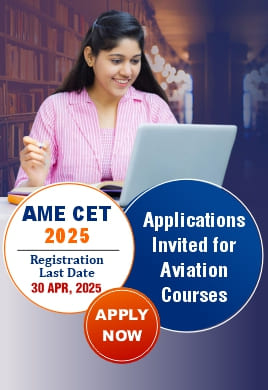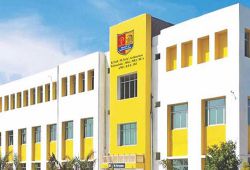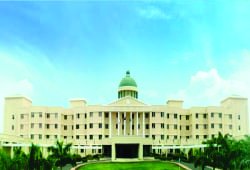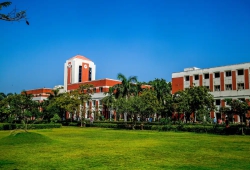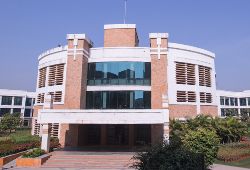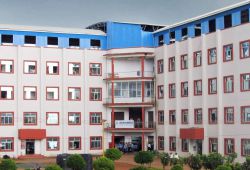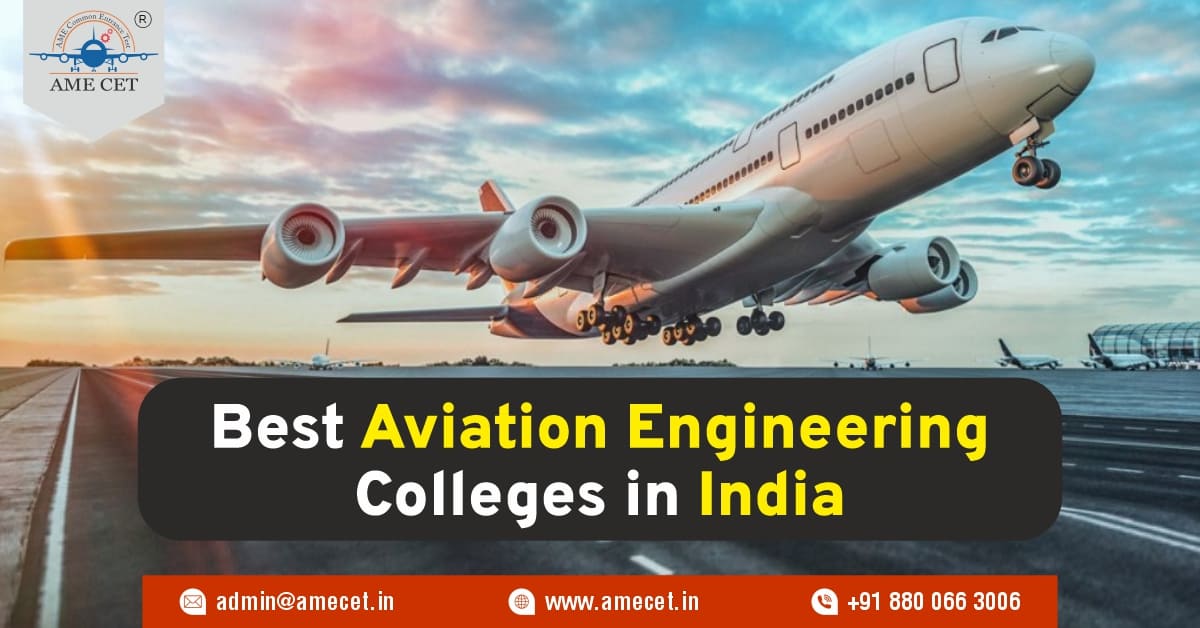
Best Aviation Engineering Colleges in India
Aviation Engineering colleges in India focuses on the design, development, maintenance, and safety of aircraft and aerospace systems. With rapid growth in the aviation sector, the demand for skilled engineers is increasing. The field includes Aeronautical, Aerospace, and Avionics Engineering, along with Aircraft Maintenance Engineering (AME). Top institutions like IITs, IIST, and DGCA-approved AME colleges offer specialized programs. Career opportunities exist in airlines, MROs, defense, and research organizations like ISRO and DRDO, ensuring a promising future for aviation professionals.
Importance of Aviation Engineering in the Aerospace and Airline Industries
-
Aircraft Design & Development – Aviation engineers play a crucial role in designing and developing advanced aircraft, ensuring safety, efficiency, and innovation.
-
Safety & Maintenance – Engineers ensure the proper maintenance and functioning of aircraft, reducing the risk of technical failures and enhancing passenger safety.
-
Technological Advancements – Aviation engineering drives innovation in aerodynamics, avionics, propulsion, and materials, improving aircraft performance and sustainability.
-
Growth of Airlines – Engineers help optimize fuel efficiency, reduce operational costs, and enhance aircraft durability, benefiting the airline industry.
-
Defense & Space Sector – Aviation engineers contribute to military aircraft, UAVs, and space exploration projects, supporting national security and scientific advancements.
-
Career Opportunities – With rapid growth in India's aviation sector, skilled engineers are in high demand in airlines, MROs, and aerospace companies.
Types of Courses Available in Aviation Engineering colleges in India
-
B.Tech in Aeronautical Engineering – Focuses on the design, development, and maintenance of aircraft, including aerodynamics, propulsion systems, and avionics.
-
B.Tech in Aerospace Engineering – Covers both aircraft and spacecraft technology, including satellite systems, propulsion, and space exploration.
-
B.Tech in Avionics Engineering – Specializes in aircraft electronic systems, communication, navigation, radar, and flight control systems.
-
B.Tech in Aircraft Maintenance Engineering (AME) + DGCA License – A dual-degree program combining academic knowledge with practical training to obtain an AME license for aircraft maintenance and repair.
-
B.Sc. in Aviation – Focuses on aviation management, flight safety, and aircraft operations, ideal for those interested in airline management roles.
Fees For Aviation Engineering colleges in India
-
Government Colleges: Govt Aviation Engineering colleges in India offer low fees to attract students, therefore, expenses typically fall between INR 30,000 and INR 1,00,000 in a year. The fee level depends on the location and type of student as well, i.e. foreign etc.
-
Private Colleges: Aviation Engineering colleges in India have higher fees when compared with government colleges, private colleges do charge much more, fees range between 1,00,000 - 2,00,000 lacs.
-
Postgraduate Programs: M.Tech programs from government institutions usually charge somewhere between INR 30,000 to INR 1,00,000 annually. Private Institutions may charge upwards of 1 lac, though also have been know to charge around 2 lacs.
-
Additional Costs and Scholarships: Apart from these expenses such as hostel, study materials, and other personal costs will also be incurred by the student. However, many scholarships help alleviate the burden and is an aid many students are able to help afford education today.
Eligibility Criteria for Aviation Engineering colleges in India
To gain admission to Aviation Engineering colleges in India, candidates must meet specific criteria, including:
-
Educational requirement: The candidate should have completed their 12th Class with mandatory subjects as Physics, Chemistry and Mathematics.
-
Entrance Examinations: Candidates must clear either the AME CET or JEE Main or JEE Advanced or other comparable national or state level entrance examinations.
-
Minimum Percentage: The candidate is required to have achieved a minimum of 50% aggregate marks in 12th class or equivalent.
-
Nationality & Age: The age and nationality of the candidates seeking admission in Aviation Engineering colleges in India may be required to be specified in some cases.
Core Subjects in Aviation Engineering Courses
BTech in Aeronautical Engineering
- Aerodynamics
- Aircraft Structures
- Propulsion
- Avionics
- Flight Mechanics
- Aircraft Design
- Aircraft Systems & Instruments
BTech in Aerospace Engineering
- Space Dynamics
- Aerodynamics
- Rocket Propulsion
- Orbital Mechanics
- Flight Mechanics
- Satellite Technology
- Spacecraft Design
BTech in Avionics Engineering
- Avionics Systems
- Radar & Navigation
- Flight Control Systems
- Embedded Systems
- Communication Systems
- Power Electronics
BTech in Aircraft Maintenance Engineering
- Aircraft Structures
- Aircraft Propulsion
- Maintenance Practices
- DGCA Regulations
- Airframe & Powerplant Systems
- Human Factors
BSc in Aviation
- Air Navigation
- Meteorology
- Airport Operations
- Flight Safety
- Aviation Regulations
- Aircraft Performance
- Airline Management
Campus Facilities at Aviation Engineering colleges in India
World class facilities are provided by Aviation Engineering colleges in India. These Facilities in these institutions Industries provide both practical and theoretical training in the Aviation field. Apart from the private institution concentrate on a well conceptualized and captivating infrastructures, some campus facilities those so far in existence are discussed below.
-
Maintenance Hangars: Typically, most campuses possess hangars as part of the Aviation Engineering colleges in India which could even house actual aircrafts. And aircraft parts within the borders of the campus would certainly make the “must have” list from where students were taught how to maintain, service and repair of an aircraft under supervision from an expert.
-
Real-world Instruction: The education that happens inside an aircraft literally removes any doubt from the student’s mind of any mechanical faults and prepares him/her for his/her work environment that involves an aircraft and its components.
-
Workshop in Aviation: Moreover, countless forward-thinking aeroplane workshops within the Institution of Aeronautical Engineering of India tend to restrict the practice on real aircraft and aerospace tools. The school buildings of the Aviation Engineering colleges in India usually make effective practices of the ground base repair and maintenance work like engine servicing, structural testing of composite elements, structural evaluation, avionics, and others. It is also necessary to have on board simulators and mock-up models.
-
Research Centres: For instance, an institution specializing in Aviation Engineering will, for example, set up several aviation training institutes where all the facilities required to research, work on projects, and innovate in aviation science are available through an unprecedented scale of indigenous technology for UAV and Aerodynamic Propulsion Systems known to India.
-
Libraries and E-Learning Platforms: Libraries are set up very well; you will find at many colleges textbooks, complete literature, articles, journals, research papers, and all other means of literary documentation. Moreover, the Aviation Engineering College and also a few of the engineering colleges in India are equipped with digital libraries, apart from normal libraries, in order to facilitate students of specific branches through e learning devices and other technological devices as wi-fi connected tablets and smartphones.
-
Sports Facilities: Along with other well known institutions, Aviation Engineering College include fields for sports, gyms, and facilities for both indoor and outdoor sports to encourage students’ physical education as well as devise proper balance between work and life and for the holistic development cultural clubs, music rooms, fests, technical competitions and hobby rooms are provided for students to participate actively in extracurricular activities.
Admission Process for Aviation Engineering colleges in India
Here are the steps for Aircraft Maintenance Engineering Common Entrance Test AME CET to get admission Aviation Engineering colleges in India:
Step 1: Application Submission - First, the candidate has to submit through the AME CET official website. They need to fill personal information like name, education, contact, and address. Any misinformation can result in a disqualification of the candidate.
Step 2: Entrance Exam - Once the application form has been submitted and accepted, candidates should appear for the AME CET Enterance Exam on the specified date.
Step 3: Result Declaration - After the entrance exam, the candidate’s performance will be assessed and from those results AME CET will release results and rank scorecards for those deemed worthy of the scholarship, counseling, and seat allocations.
Step 4: Counseling Process: Qualified candidates has to attend the AME CET counseling sessions and during counseling, candidates can choose their preferred aviation engineering colleges and specializations based on their ranks.
Step 5: Document Verification: After completing counselling students required to submit class 10th and 12th mark sheets, a score card of AME CET exam, identity proof like an Aadhar card, and a few passport size photos.
Step 6: Seat Allotment: Based on the candidate's AME CET rank, preferences, and seat availability, colleges offer seat allotments letter to student who completed counselling process.
Step 7: Fee Payment: Once a seat is allotted, candidates must pay the admission fee within the specified deadline. Fees structure of the colleges is varies across different colleges in all over India mainly covers tuition fees, registration charges, and other academic expenses
Step 8: Reporting to College: After completing the admission formalities, students must report to the allotted college on the specified date.
Employment Sectors for Aviation Engineers
| Sector | Description | Top Employers |
|---|---|---|
| Airlines | Involves aircraft operation, maintenance, and safety management. | Air India, IndiGo, SpiceJet, Vistara |
| MROs (Maintenance, Repair & Overhaul) | Ensures aircraft are maintained, repaired, and overhauled for airworthiness. | Air Works, GMR Aero, Boeing MRO, HAL MRO |
| Defense | Focuses on military aircraft, UAVs, and aviation technology for national security. | DRDO, HAL, Indian Air Force, ISRO |
| Aircraft Manufacturing | Design, development, and production of commercial and defense aircraft. | Boeing, Airbus, HAL, Dassault Aviation |
| Research Organizations | R&D in aerodynamics, propulsion, avionics, and space technology. | ISRO, CSIR-NAL, DRDO, IITs, IIST |
Top Recruiters forAviation Engineering Graduates
In India
- Indian Space Research Organization (ISRO)
- Defence Research and Development Organization (DRDO)
- Hindustan Aeronautics Limited (HAL)
- Bharat Heavy Electricals Limited (BHEL)
- National Aeronautics Laboratory (NAL)
- Tata Advanced Systems
- Mahindra Aerospace
- L&T (Larsen & Toubro)
- Indigo Airlines
- SpiceJet
- Vistara Airlines
Global Recruiters
- NASA (National Aeronautics and Space Administration)
- Boeing
- Airbus
- Rolls-Royce
- Lockheed Martin
- Northrop Grumman
- SpaceX
- Blue Origin
- Raytheon Technologies
- General Electric Aviation
In conclusion, Aviation Engineering offers diverse and promising career opportunities across various sectors like airlines, MROs, defense, and aerospace research. With specialized courses such as B.Tech in Aeronautical, Aerospace, Avionics Engineering, and Aircraft Maintenance, students gain expertise in cutting-edge technologies and critical areas of aviation. The growing aviation industry in India demands skilled professionals, making these courses essential for those aspiring to make a mark in the aviation and aerospace fields. As the sector expands, graduates can look forward to rewarding careers with global opportunities.
